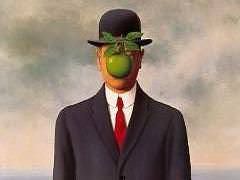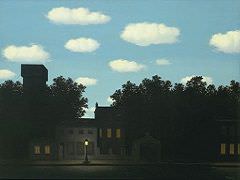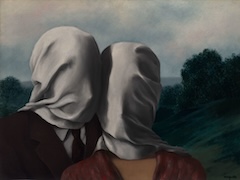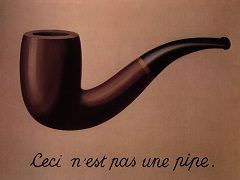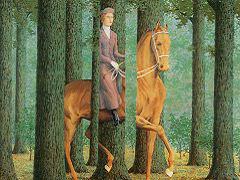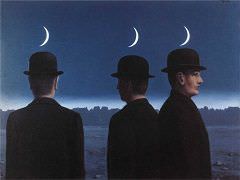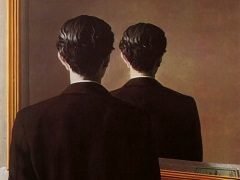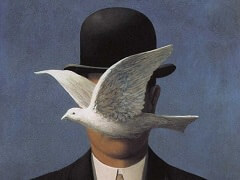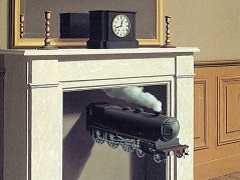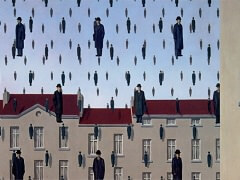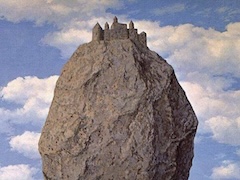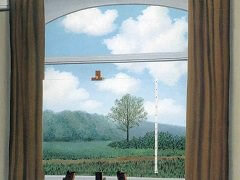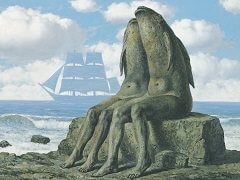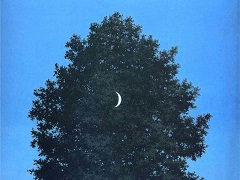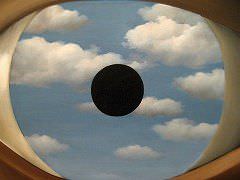The Banquet, 1958 by Rene Magritte
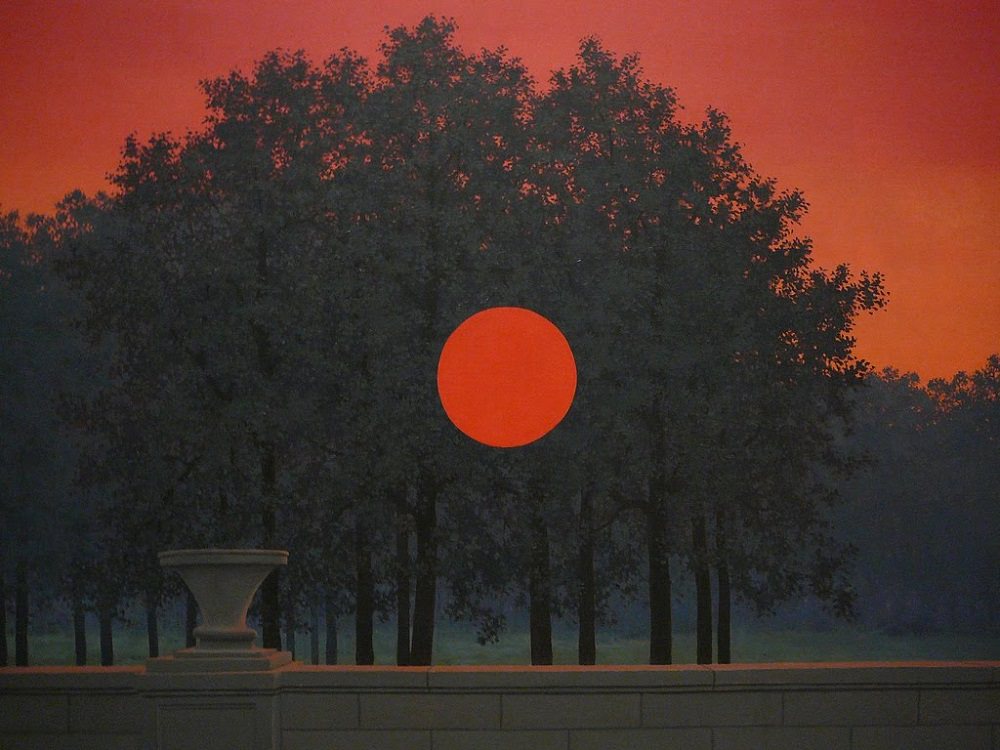
In the foreground of The Banquet is a stone wall, with a stone vase. Past the wall there is a group of trees, then a field and then a line of trees. The sky is shades of red, the sun must be near the horizon. There a light mist in the field. In the center of the painting, right in the middle of the trees, is a red circle.
The wall is meticulously painted, each line exactly right angles, and the color seems accurate. The nearest trees are representational, accurately rendered. The farther trees are less sharp. The field is suggestive as is the line of trees at the back. Magritte observes the rules of perspective. The only exception is that red circle. It upsets the eye, it jerks the mind away from a pastoral scene. How do we incorporate the image of the sun on this side of the trees with the realism of the painting? Why is the painting titled The Banquet?
Magritte was a "realistic" painter. This observation stresses just one of his more striking original features. And at the same time it underlines one of his principal features; one which distinguishes him from so-called "modern art" -in all its manifestations - on a comprehensive revision of the approach by art to reality. Modern art rejected realism explicitly, denying that painters and painting, above all, had any mission to reproduce nature, living or dead, in favour of a doctrine which affirmed the expression of feelings, sensations, emotions, inward reflexions and so on. It is tempting, in a word, to declare that in place of 19th century Impressionism which, confronted by the landscape before which one had set up one's easel, knew how to recover sensations through techniques of colour diffraction, there was a desire to substitute an impressionism of diffuse feelings proceeding not from the subject painted, but frrom the manner in which it was painted.

